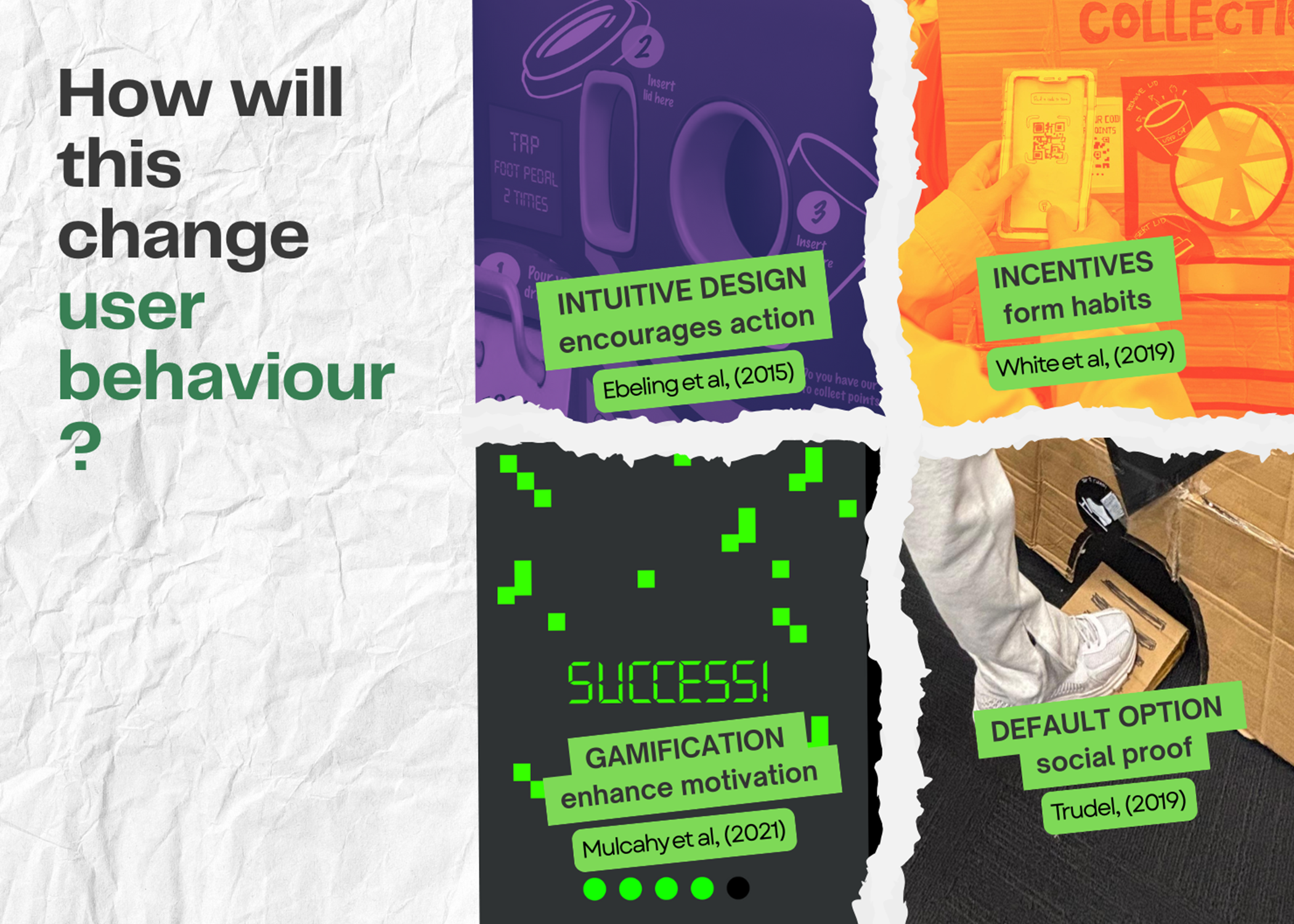Return Reuse
Coffee Cup System
MAKE REUSABLE CUPS THE NORM,
be sustainable effortlessly.
This was a team project where we begun with individual research, then made and tested prototypes collectively.
PROBLEM SPACE
This project addresses the persistent issue of single-use disposable drink containers, which remains prevalent despite numerous awareness campaigns. A 2024 report On the United Nation's Sustainability Development Goals indicated the urgent need for intervention due to the significant environmental impact of plastic waste.
As a response, I investigated the motivations behind consumer behavior for using single use disposable containers, with a focus on understanding the underlying psychological and social factors that influenced their decisions. The goal is to design effective strategies aimed at reducing the use of disposable containers and promoting sustainable practices, such as using reusable cups, in USYD.
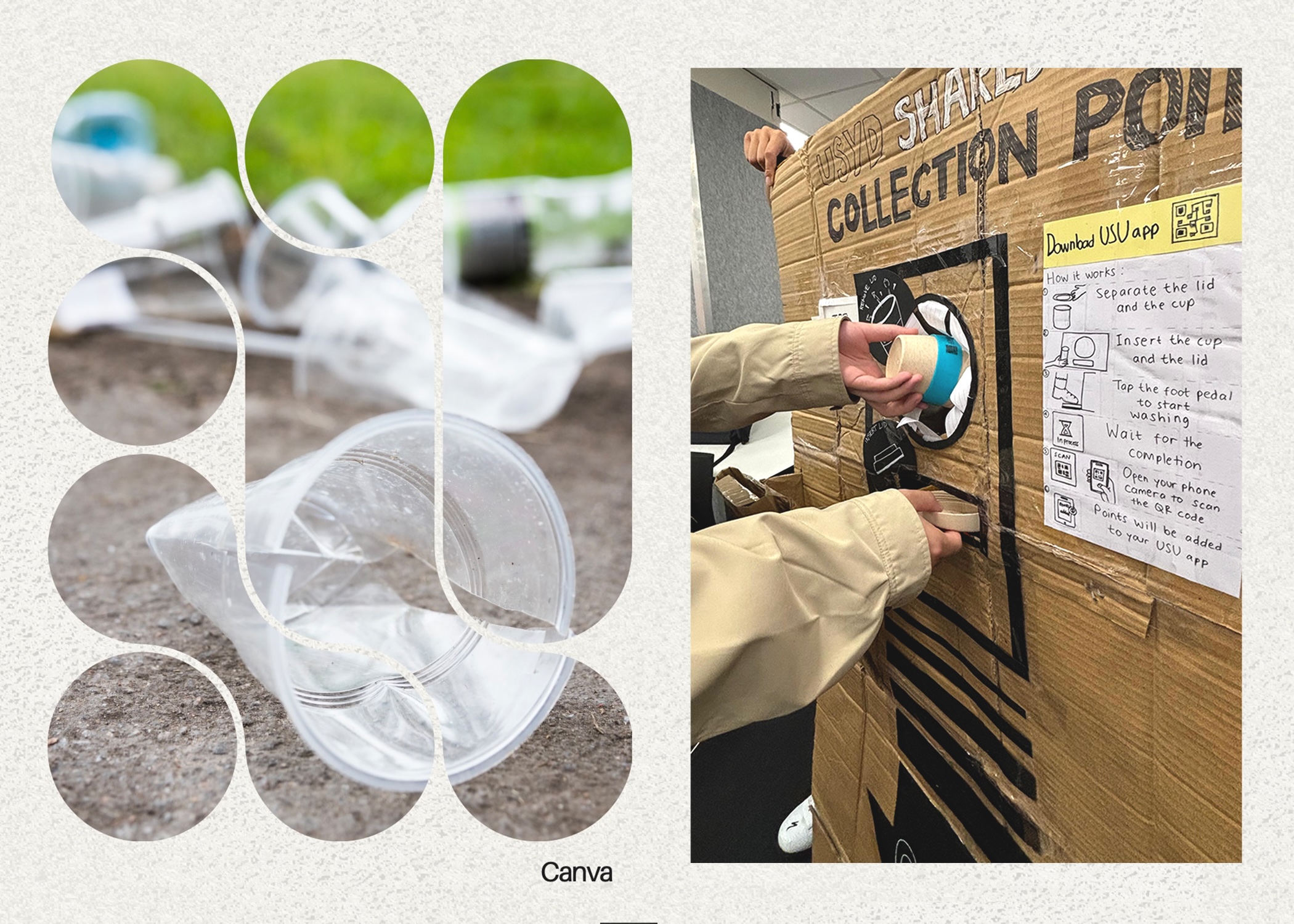
KNOWLEDGE MAP
SKETCHNOTING
After some initial secondary research, I filtered the information into 10 core insights categorised into 3 parts:
Yellow - Ongoing user and environmental problems.
Red - General user motivations.
Purple - Possible solutions to change user behaviors.
Sketchnoting helped me visualise the research in a clear, organised, and creative format. It also allows me to present my findings to the team in a more engaging way.
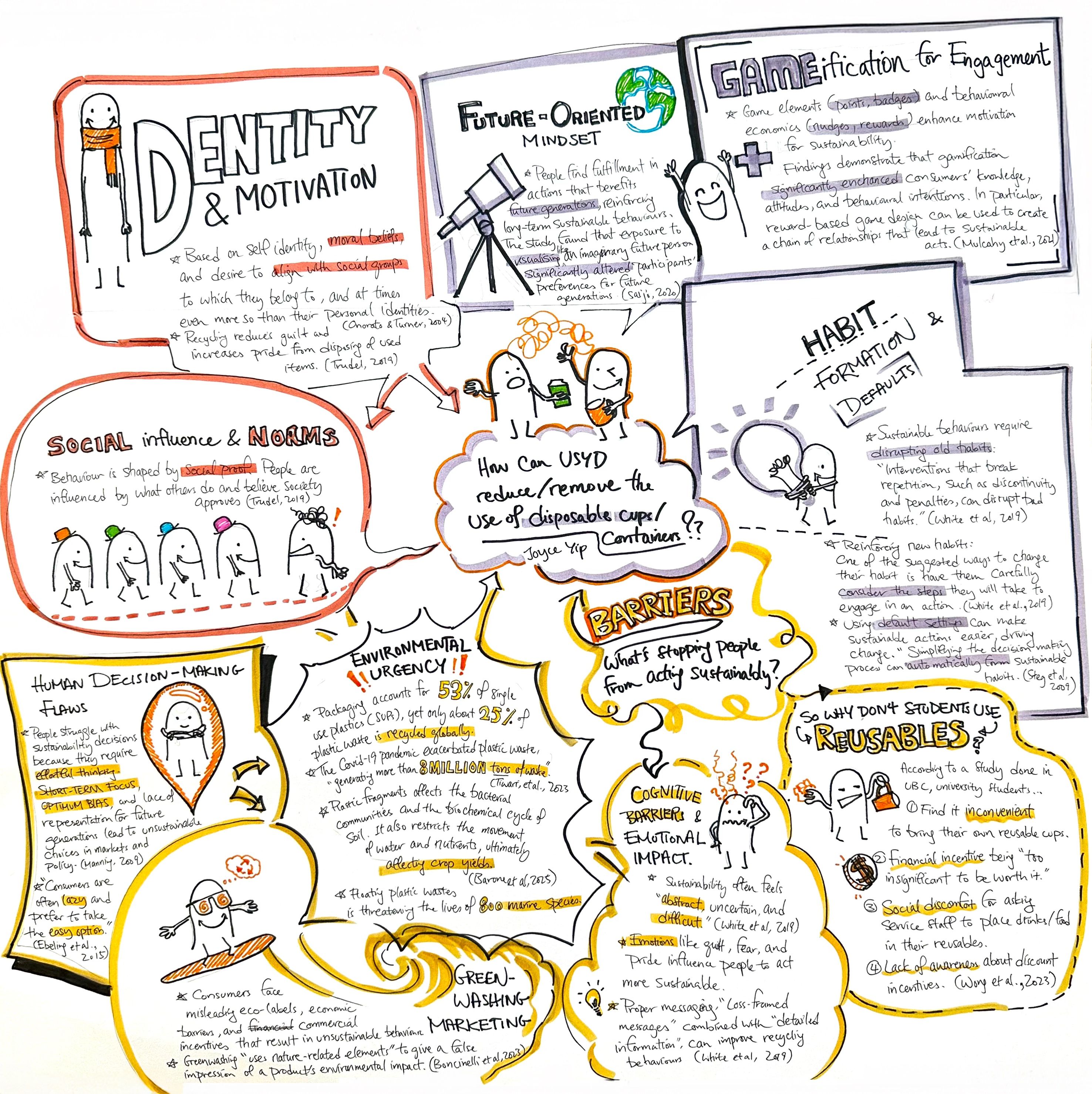
STAKEHOLDER MAP
& POWER MAP
The stakeholder map identifies primary and secondary groups affected by the issue. Primary stakeholders like students, staff, visitors, tourists, and food/beverage vendors, are directly impacted by university initiatives and incentives. Secondary stakeholders, such as vendor companies, prospective students, parents, and local wildlife, are indirectly affected by the actions of primary users.
The power map outlines each group’s influence and interest in the project. Students and staff hold high power and interest as key interview participants and daily users of disposable cups. Their ongoing presence on campus makes them prime candidates for sustainability initiatives. Vendors have moderate power and interest as they may support sustainable branding but could face financial trade-offs, such as offering discounts for reusable cup use.
GUERILLA INTERVIEWS
For the initial research, I conducted interviews with USYD students who purchased a disposable cup on campus. The focus is on frequent campus users to find ways to reduce disposable cups. I sought interviewees from diverse cultural backgrounds to reflect the multicultural population of USYD so that I could brainstorm culturally inclusive ideas.
ETHICAL CONSIDERATIONS
Although many people have no problem talking while they eat, some may have trouble multitasking. Potential risks include choking on food or drink while responding to questions, or burning their tongue when consuming hot beverages. Based on a provided Risk Assessment Form, this scenario was classified as a 'minor' consequence, meaning ‘first aid required’. To mitigate this, I highlighted potential risks before interviewing them. I made sure they were not in a rush, so they could take their time to answer my questions.
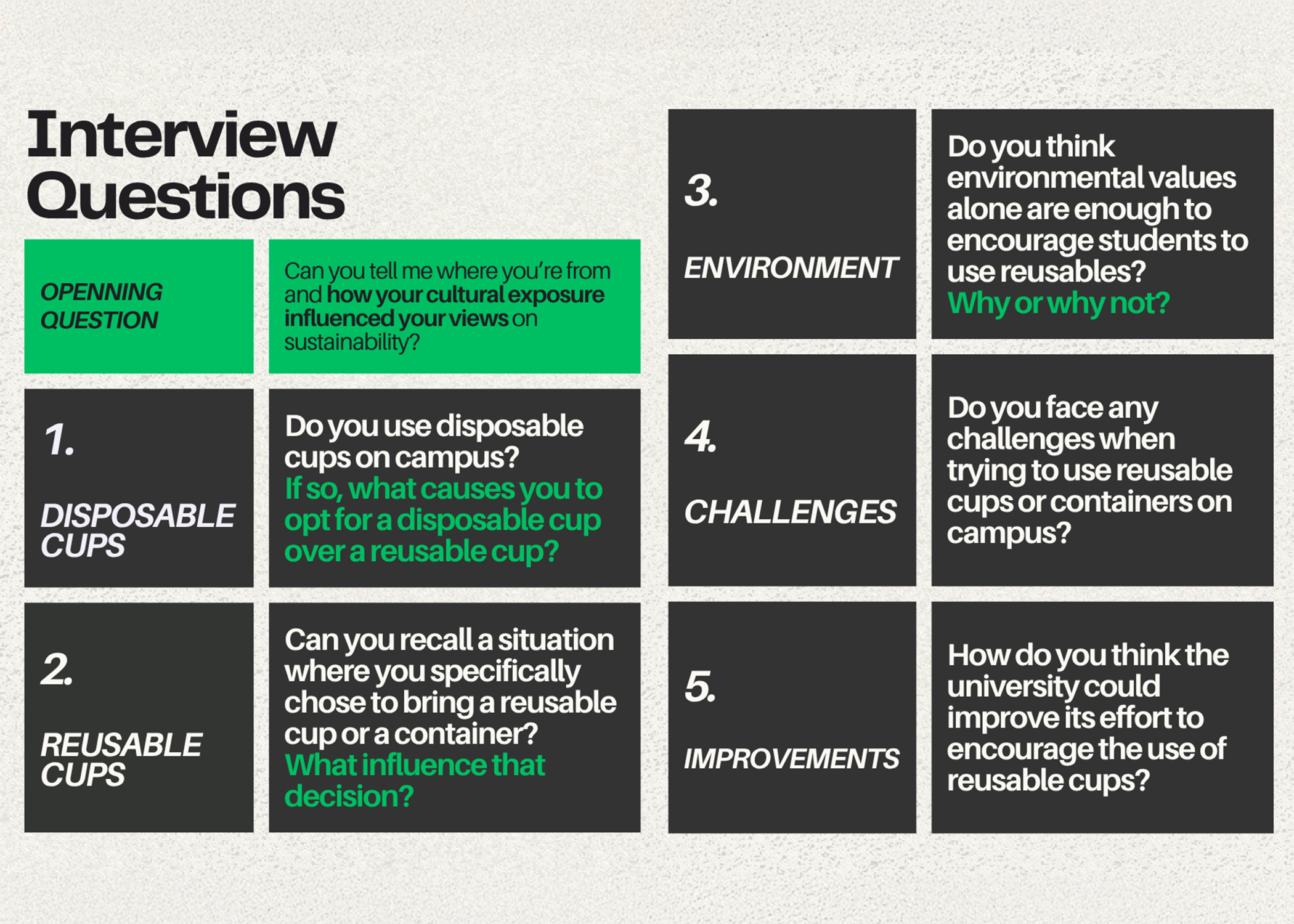
IDENTIFIED PROBLEM SPACE
After conducting individual interviews, our team identified three key themes from the primary research. We found that students use disposable cups because they’re convenient, provided by default, and many are unaware of their personal environmental impact. These insights revealed clear opportunities for a design solution. We then developed ideas such as installing collection points to make reusable cups easier to return, encouraging sustainable habits through rewards and penalties, and serving drinks in reusable cups by default.
USER NEEDS
From our interviews, we identified both elicit and latent needs of our target users, primarily USYD students.
Elicit needs are consciously recognised and expressed by the interviewees. For example, some preferred disposable cups because they’re easy to discard and don’t require cleaning. Others felt there was little incentive to change their behaviour. On the other hand, latent needs are unspoken and often unconscious. These include low awareness of environmental impacts, a tendency to make quick decisions, and a desire for easy access.
By uncovering these deeper user needs, we were able to design a solution that more effectively taps into user motivations and encourages behaviour change.
DEVELOPING IDEAS
In response to our research, each team member contributed rough ideas for the design solution. Then as a team, we voted on the reusable cup return bin idea as it best meets user needs. To make the return bin intuitive and engaging, we took inspiration from Don Norman’s psychological principles—like affordances, signifiers, mappings, constraints, and feedback—and incorporated them into the design. This helps users immediately understand how to use it, making sustainability an easy, everyday choice.
USER TESTING RESULTS
We tested both the return bin and mobile app prototypes with four participants, each completing six specific tasks—from locating the bin to reviewing available coupons. Overall, participants responded positively, finding the design visually appealing and easy to understand. However, some usability issues emerged with the app, particularly around navigating the map and locating the QR code scanner. In the return bin prototype, a common user error occurred where some participants inserted both the cup and lid into the same slot.
ITERATIONS
MOBILE APP
In our first prototype, we integrated the return bin feature into the existing USU student app. However, user testing revealed difficulties in locating the feature, largely due to the app’s existing structure and indirect navigation paths. To resolve this, we developed a standalone app with a more intuitive layout. Based on positive feedback, the rewards page remained unchanged. The QR scan button, previously hard to find, was moved to the home screen, and pop-ups were added to clearly display key functions like directions, scanning, and location sharing—making it easier for users to find bins and earn points.
FINAL DESIGN CONCEPT
MOBILE APP
Our final app design is direct and engaging, using colours that match the return bin for visual consistency. The home screen features a map and a prominent scan button, allowing users to quickly locate a bin, scan to collect points, or access their rewards. An animated emoji on the thank-you pop-up adds a playful touch that enhances the user experience. Live points updates and enticing coupons further motivate users to maintain sustainable habits.
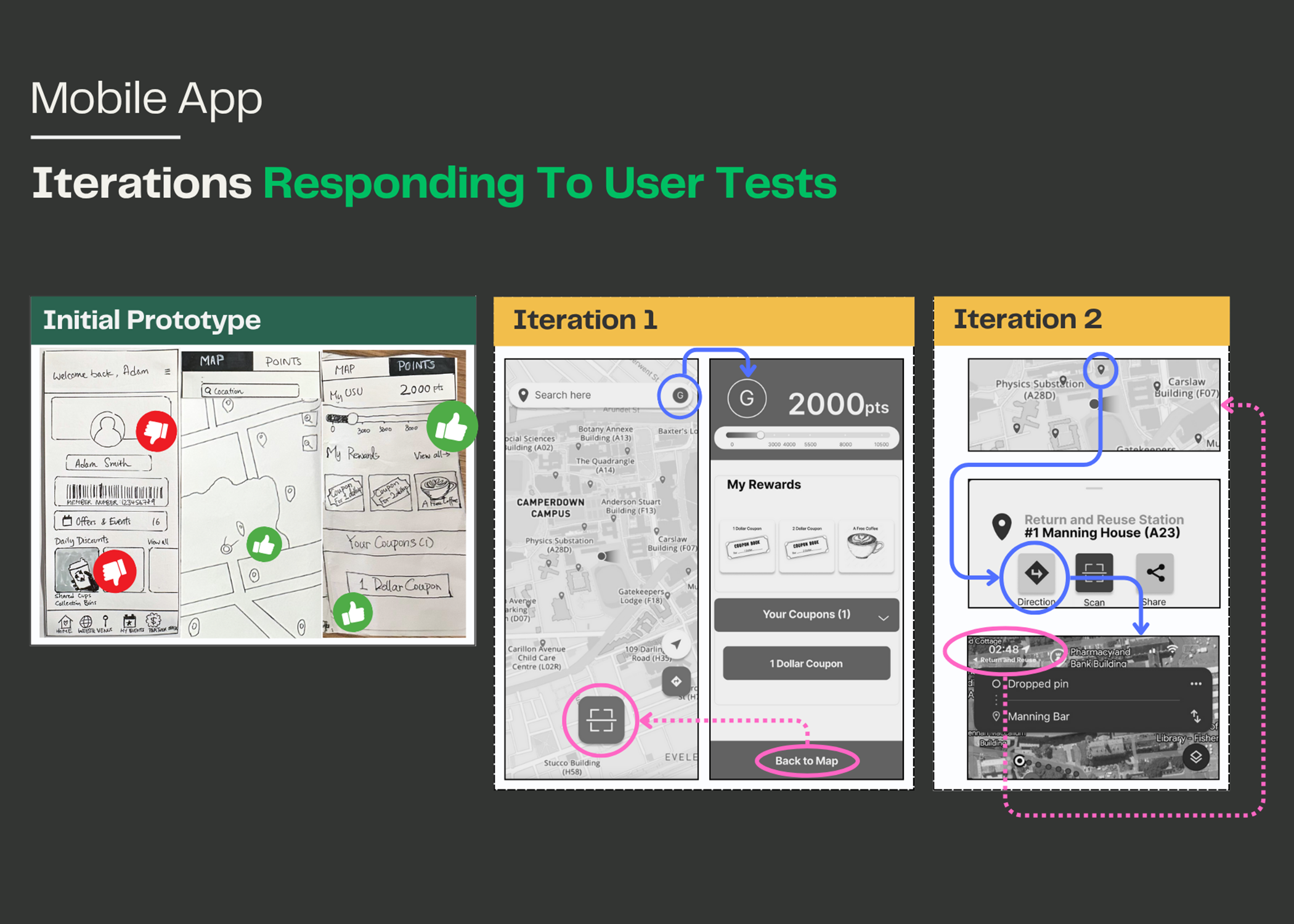
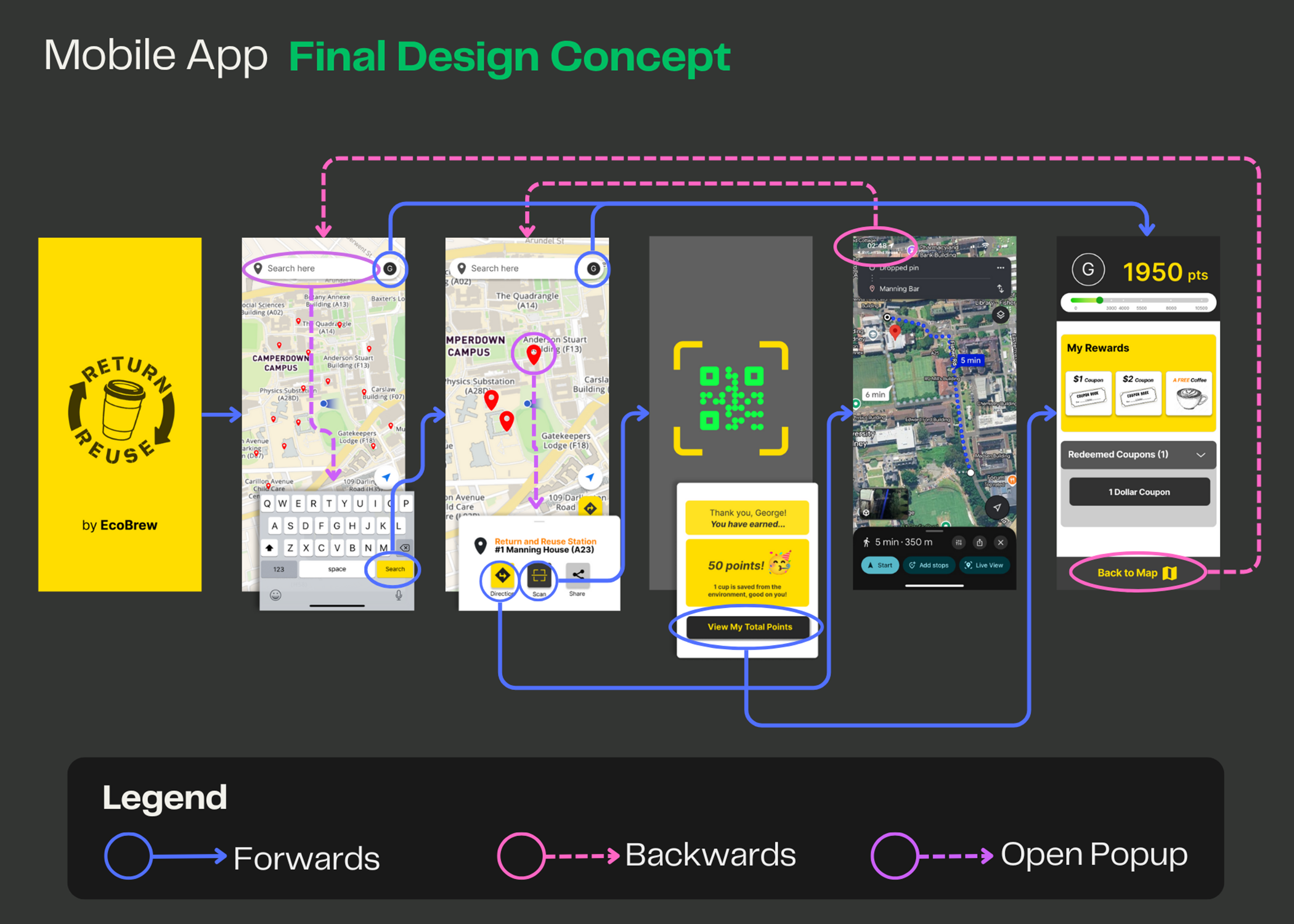
ITERATIONS
THE RETURN BIN
Through usability testing, we found that while users liked the original return bin design, many were confused by the variety of instructions and didn’t know where to start. One instruction was inconsistent, and half the users inserted the entire cup into the wrong hole—completely missing the lid slot. To solve this, we applied Gestalt’s principle of continuity, Nielsen’s heuristic of matching the real world, and the F-pattern of reading. These helped us simplify the layout and guide users more intuitively, reducing confusion and mistakes.
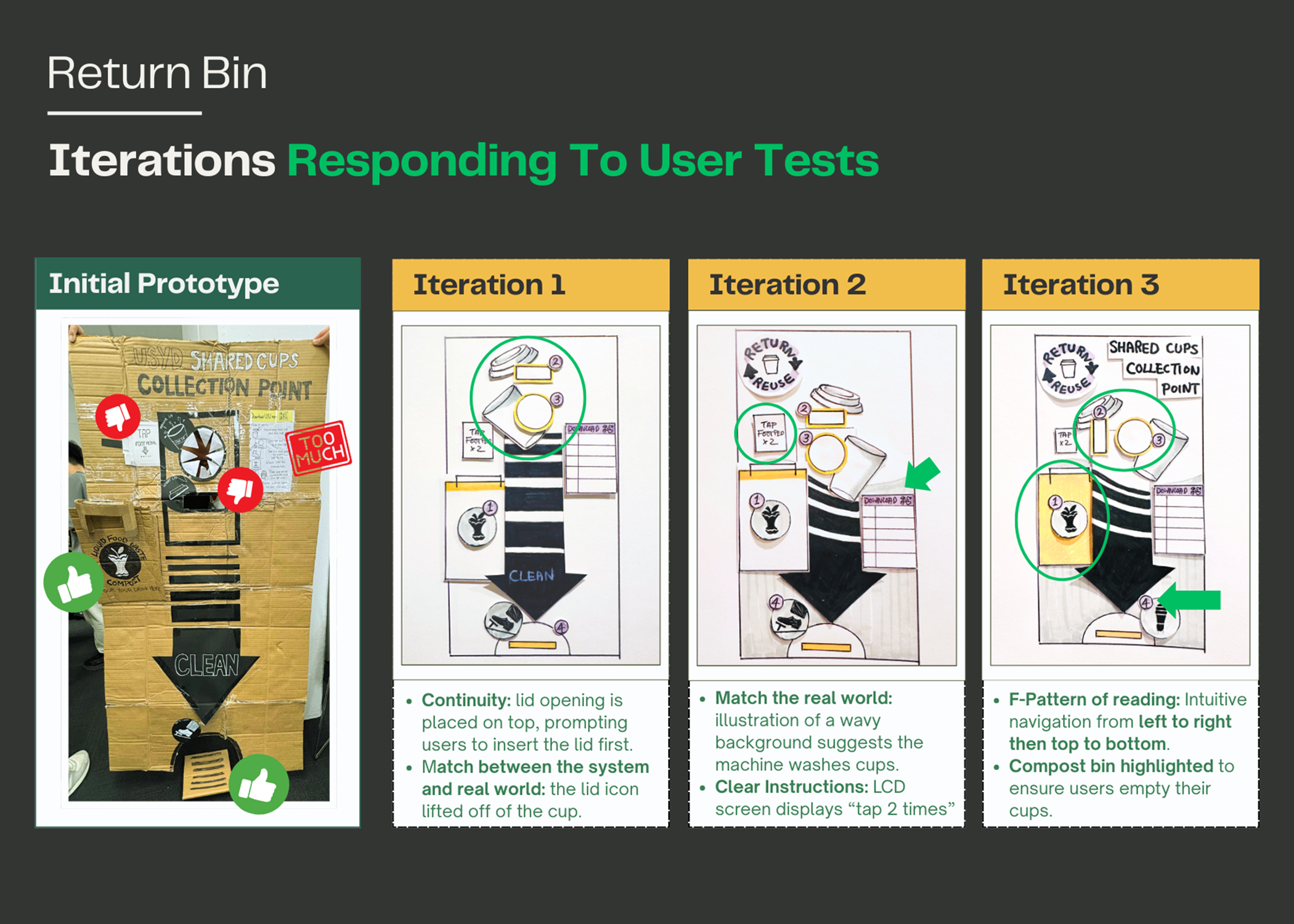
FINAL DESIGN CONCEPT
THE RETURN BIN
Our final design is a low-powered return bin that goes beyond reducing disposable cups. It also recycles liquid waste, washes reusable cups with minimal energy, and provides user updates via a low-powered LCD screen. With just two taps on a foot pedal, users can enjoy an engaging, sustainable cup-washing experience. The black bin highlights yellow action points, starting with a bold yellow compost bin and guiding users in a clear, clockwise flow. Illustrations (e.g. cup and water) and intuitive action cues (e.g. pull handles, foot pedal) make each step feel natural and easy to follow.
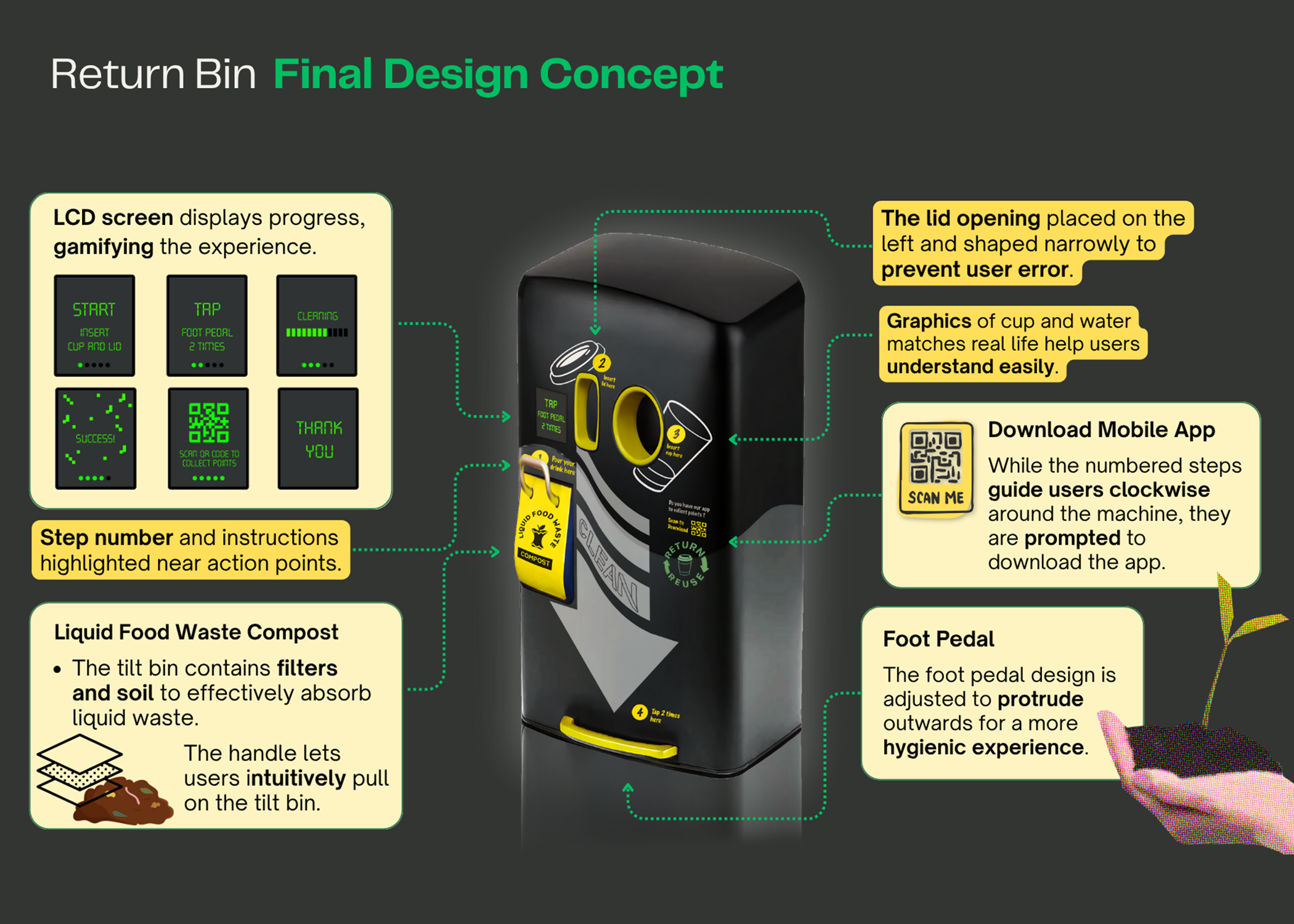
CONCLUSION
Our final design concept seeks to shift user attitudes toward sustainability from a distant, abstract goal to something approachable, easy, and even enjoyable.
By streamlining the user journey from our mobile rewards app to convenient return bins, we’ve simplified the process of returning reusable cups. But how do users receive these cups in the first place? Our solution is to make reusable cups the default option at food vendors. This way, users can act sustainably without needing to make an active choice. This aligns with findings by Ebeling & Lotz (2015), which show that consumers often favor the path of least resistance.







